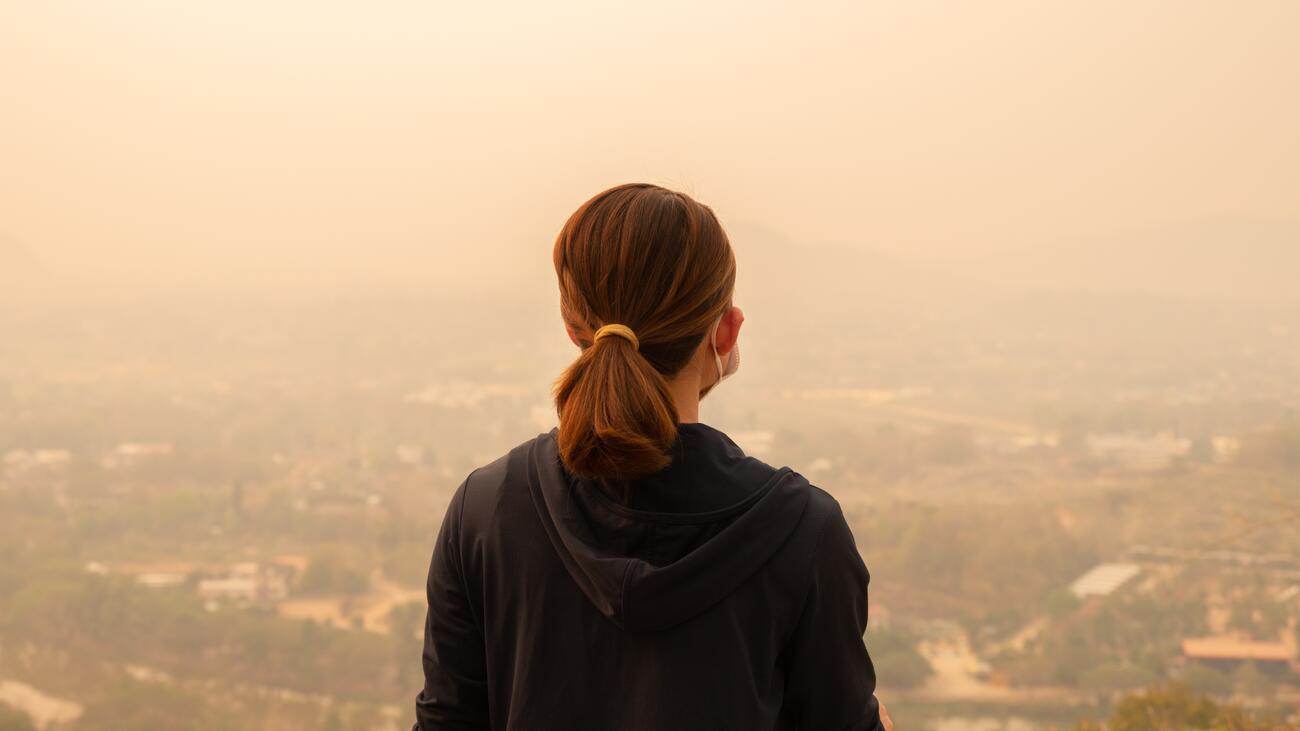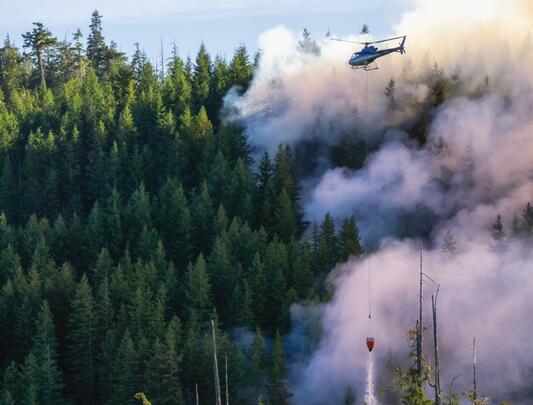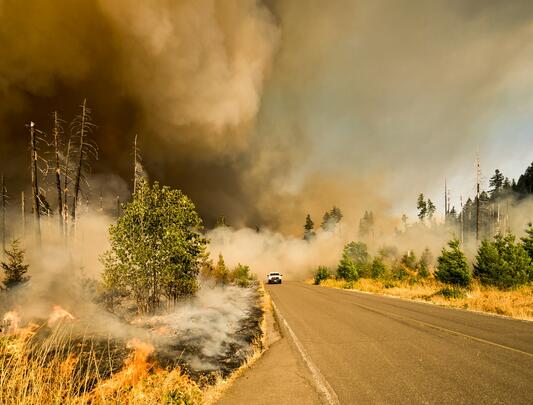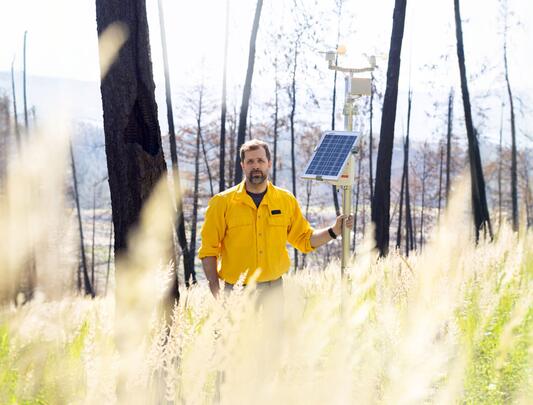How to protect your lungs from wildfire smoke
After a slow start to the wildfire season, a period of hot and dry weather has sparked hundreds of fires across BC and Canada. The rapid increase in fire activity has forced evacuations and covered communities in plumes of smoke and ash.
We spoke with Dr. Christopher Carlsten, professor of respiratory medicine at UBC’s Faculty of Medicine, to understand the health risks posed by wildfire smoke and the steps people can take to protect themselves.
What is “wildfire smoke”?
Wildfire smoke is a mixture of very small particles and a range of gases. The exact composition of the smoke varies markedly according to the type of forest and other landscape burned and the conditions of the fire itself.
Fine particulate matter, or PM2.5, is the primary public health concern. These particles are less than 2.5 microns in diameter, about 30 times thinner than a human hair. They are so small that they can travel deep into the lungs and even pass through into the bloodstream.
What are the potential health effects of wildfire smoke?
We know much less about this question than one might expect, and certainly much less than we know about health effects due to traffic pollution, mainly because the rise in fire intensity has been so rapid and our science has struggled to keep up. But we know wildfire smoke can trigger asthma, chronic obstructive pulmonary disease (COPD), infection, and cardiac disease.
Long term, we suspect that wildfire smoke can cause the same diseases caused by traffic-related pollution, including heart and lung disease, but we’re still in the early stages of research. Last year, our lab published a novel study showing that traffic pollution can affect brain function, so we suspect that the impacts of fire-related poor air quality likely also extend far beyond the cardiovascular system.
Everyone responds differently to wildfire smoke and, generally speaking, those at greatest risk include people with pre-existing heart and lung conditions, people who are pregnant, young children and older adults, and those who spend a lot of time outdoors.
How can we mitigate the health effects of smoke?
Most importantly, you should reduce exposure by limiting time spent outdoors, but this can be very difficult during extended spells of smoke during fire season.
Beyond exposure reduction, there are several measures one can take, including wearing N95 masks outdoors, which provide effective protection against the fine particulate matter in wildfire smoke. Indoors, consider HEPA air cleaners to filter the air in your home. There is also growing evidence from our teams at UBC and elsewhere that a diet rich in anti-inflammatory and antioxidative foods could help the body to combat the negative effects of air pollution.
Check out the excellent resources at the BC Centre for Disease Control for more tips.
How can we know when the air quality is poor?
When the air looks dirty, that’s a strong sign of poor air quality, but it’s important to know that air quality can be hazardous even when the air quality might seem good to the naked eye.
Therefore, to really be informed, you’ll need to check the air quality forecast and watch for alerts about poor air quality in your region. In Canada, we use the Air Quality Health Index, a one-to-10 scale that estimates health risk. Recognizing that these are imprecise guidelines, you should consider modifying outdoor activities when this index is above seven for the general population, or above four for at-risk groups. There are a variety of places where you can access this information, including the WeatherCAN phone app, or you can check PM2.5 levels specifically using AQmap.ca.





























